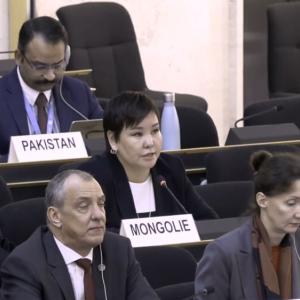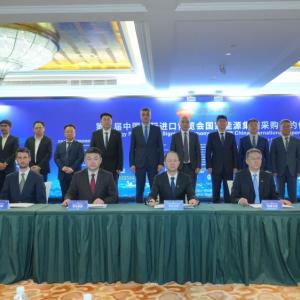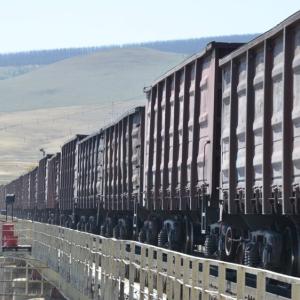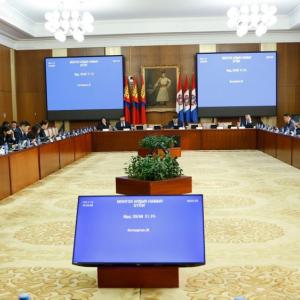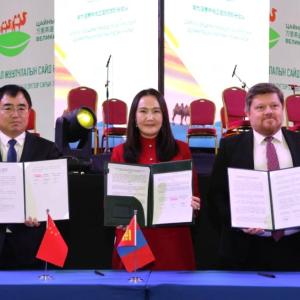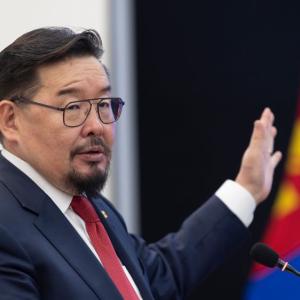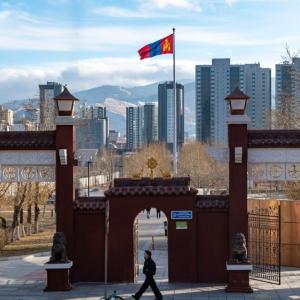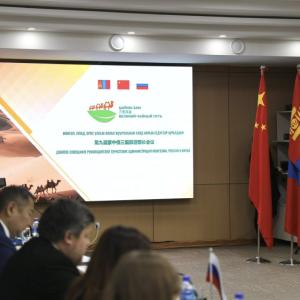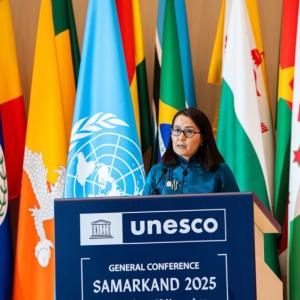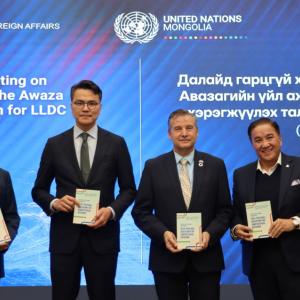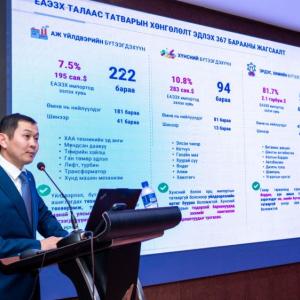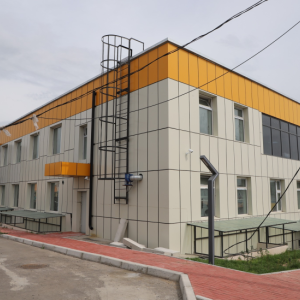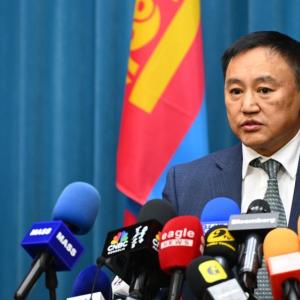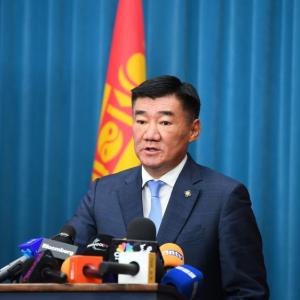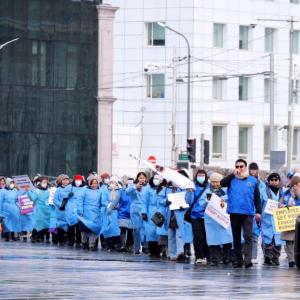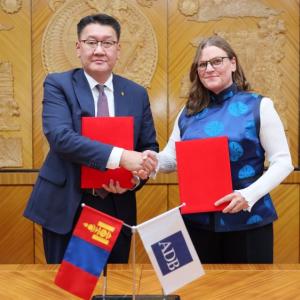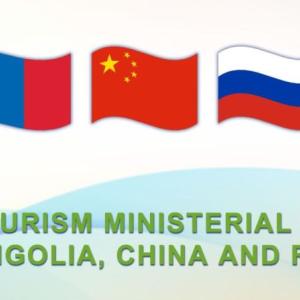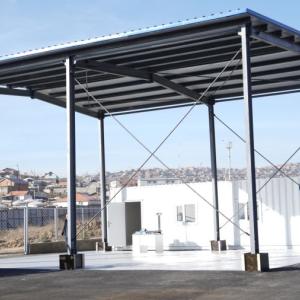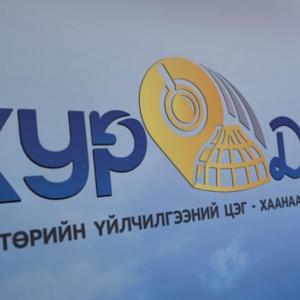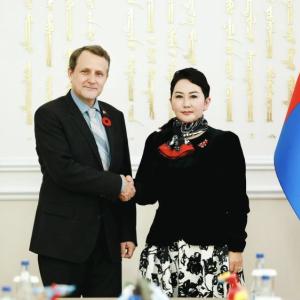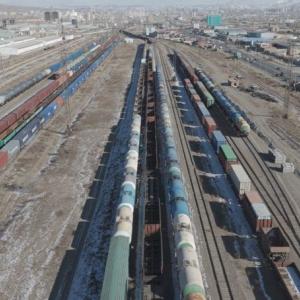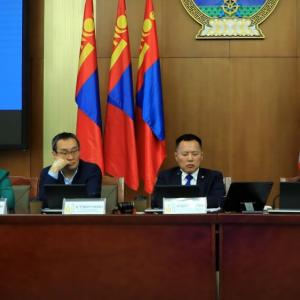‘ETT’ bond and be ready for the commodity supercycle
The Mongol Messenger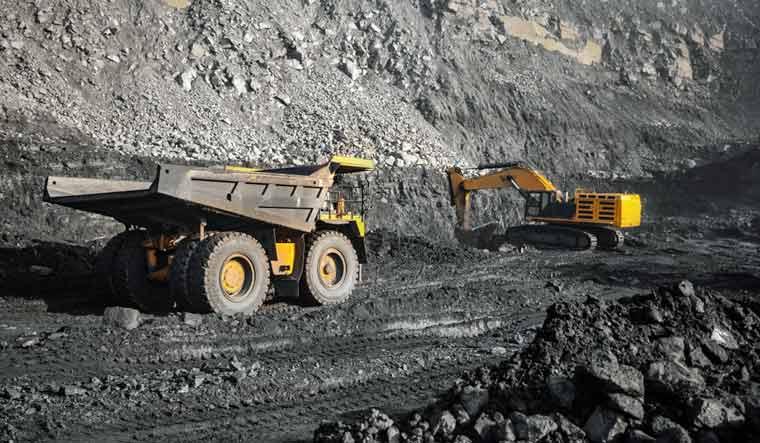
Trading and
reputation of the bond
Erdenes Tavantolgoi, a Mongolian state-owned joint-stock company,
has launched a three-phased trading of ‘ETT’ bond to raise MNT 2 trillion. The
first phase trading of the bond was organized between March 30 and April 9,
raising MNT 677.7 billion. It means that the planned target of MNT 600 billion
has been exceeded by 13 percent.
Stock market analysts explain in many ways what the value
and advantages of the ‘ETT’ bond are. For example, firstly, the bond has low
risk because the state-owned company has issued it, and secondly, it has the
advantage of not being subject to depreciation as it is listed on the domestic
stock exchange in US dollars.
In addition, the company has been effectively managing a large-scale
construction of railway, and Tavan Tolgoi Fuel Company, and for the first time
distributed dividends of 1,072 shares, being owned by every citizen of Mongolia,
which has been a political tool for many years. It is likely to be reputable in
the sense that is a bond of the company that has matured financially and
operationally. Moreover, the Bank of Mongolia's first legal support for the
issuance of foreign exchange bonds has certainly contributed to the success of
the trade. The Bank of Mongolia has given legal support for the first time
to issue foreign currency bonds, which has certainly contributed to the
success of the trading.
In the first phase, the bonds will be repaid over a period
of 24 months and interest will be paid every six months. The nominal unit price
is MNT 100,000 and USD 100, and 973 individuals and companies participated in
the trading. In the next phases, bonds will be repaid in up to 36 months. The
first phase of trading was for the domestic investors, while the second and
third phases are expected to attract more foreign investors.
Is the
ETT bond by the government or the company?
Investment cannot be made rashly. Investing
funds on profitable variants is certainly a basic business principle. That is
why the bond with high USD and MNT interest rates is seen to be greatly
profitable to the investors and stakeholders at this time when the savings
interest rates are low. To be specific, the MNT interest rate announced by the
central bank is 6-7 percent, while the bond’s interest
rate is 10 percent. USD savings interest rate is 2.8 percent, while the bond’s USD interest rate is 6.8 percent. This is clearly a
profitable variant to stock market stakeholders.
Moreover, the bond issued by a company that
sells its main commodity, coal, at 5-6 times its mining cost can be seen as an
opportunity to get high returns without any risk.
Government securities are considered the most
reliable investment instruments. The bond issued by a company every Mongolian
has shares in is part of the ‘MNT 10 trillion
Comprehensive Plan for Health Protection and Economic Recovery’ being
implemented by the Government of Mongolia. That is how the bond is considered
to be a government security. However, Erdenes Tavan Tolgoi JSC explained, “The bond will have no guarantee from the government. The
bond issuance is based on business principles and will not affect the
government’s debt ceiling.”
The government does not guarantee the bond even
though it holds 81.5 percent stake in the company. The company will be
accountable for any future outcomes. Nonetheless, the planned target was fully
met in the first stage trading of the bond, which suggests that the
stakeholders have belief in the bond issued by a state-owned company.
Is it the
right time to issue a bond?
In connection with the COVID-19 situation, cash
outflow began to be limited, causing a certain amount of securities to be
“accumulated” at the Bank of Mongolia - which in turn, created the opportunity
for the company to use it for financing its large-scale project. During this
time when the foreign exchange reserve is at a significantly good level at the
central bank, there is no wrong in using the finances for a state-owned
enterprise that has good capacity and resources. Issuing a bond domestically
serves as a big opportunity for domestic entities to get profits from the
state-owned enterprise. It also has a positive impact on expanding the domestic
financial and capital markets.
In the past decade, 75 million tons of coal was
extracted, of which 71 million were sold on the markets. From the sales income
of MNT 9.3 trillion, MNT 6.4 trillion was the income for the last 4 years -
which shows that its profits are continuing to increase year after year.
Furthermore, MNT 1.9 trillion was allocated in the state budget through the
company in these 4 years. These are said to be indicators for how the company
has already reached a point where it is relatively stable financially and can
implement any project without any issues.

In 2021-2025, the company is projected to run
its operations with a sales income of MNT 33.5 trillion, using about MNT 17
billion for its operational costs and allocating MNT 7.7 trillion in the state
budget. Overall, the business plans and financial estimates for the coming 5
years show the company to have a net profit of MNT 11.5 trillion, with a capacity
to pay citizens MNT 1.3 trillion in dividend. This estimate is not far off from
reality, explained the company executives.
What will
be done with the bond financing?
With the bond financing, it is planned to
implement the country’s mega construction projects, including Tavantolgoi
thermal power plant, coal concentrator, water supply and railroad. However, a
question arises that whether MNT 2 trillion is sufficient for the
abovementioned large-scale projects, otherwise there is a risk that it will be
ineffective as the bond financing is spent on many projects. For this matter,
the company explained that the projects have been internationally certified,
with detailed blueprint, preliminary budgets and proven estimation of benefits.
The projects are deemed to be possible to recoup their initial investment in a
short period.
Moreover, there are several foreign investors
who are interested in investing some projects. It can be seen as an opportunity
that has been opened up for Mongolians to participate in such profitable
projects.
It is also estimated that transportation
expense would decrease in addition to drastic increase in the sales revenue
with commissioning of Tavantolgoi-Gashuunsukhait railroad at the end of 2022.
Mongolia started supplying over 60 percent of coking coal need of China, which
was just 17 percent last year, in this time where China’s ban on Australian
coal continues. Although Mongolia is located closer to China compared to other
suppliers, expenses on auto road transport and coal washing and concentrating
processes raise the coal price, emphasized the experts. It means that there is a
necessity to launch the construction projects.
The demand to
be ready for the supercycle
Economists and experts suggest that the post COVID-19 world economy is likely
to contract to a great extent, however, the economic capacity of China will be
enhanced. This economic growth of China will serve as a foundation to help grow
the revenue of the company, whose shares are owned by every citizen of
Mongolia.
International experts also see that the “commodity
supercycle” that characterizes the mining commodity prices lies ahead of us.
Price surges on the world’s copper, iron ore, and gold markets, which hit
10-year record high this year, outline a positive outlook for this industry.

The fact that Mongolia’s primary coking coal
export market and only client - China is forecasted by international economists
to lead the global market in the world in the aftermath of the pandemic is good
news for us.
Although being dependent on one country in terms of sales and the lack of multiple export clients impose a disadvantage, China is already not “far” from us, having announced to promote its sustainable energy production. Thus, we are in need of fully utilizing this opportunity. To achieve that, Erdenes Tavantolgoi JSC is compelled to build its capacity and resources and be prepared for the next supercycle.
 Ulaanbaatar
Ulaanbaatar






